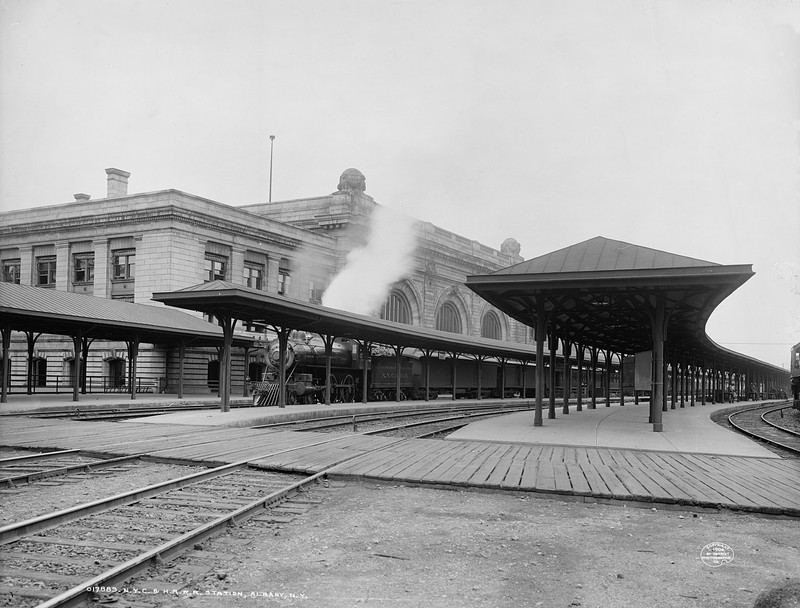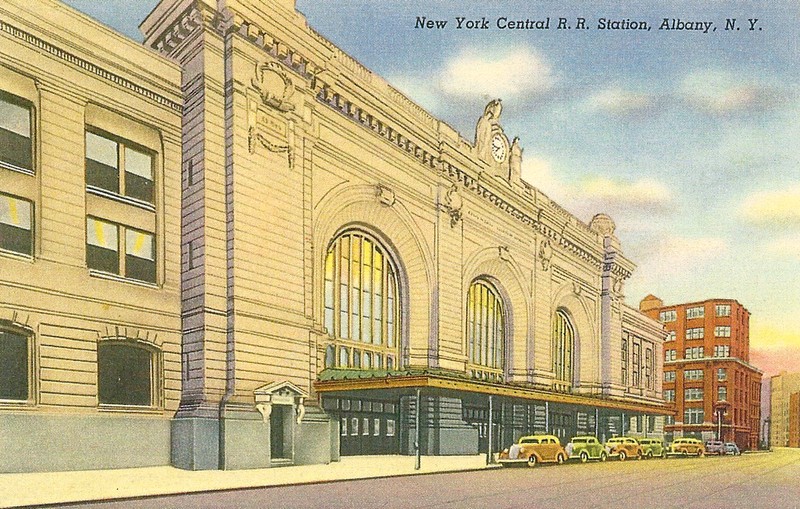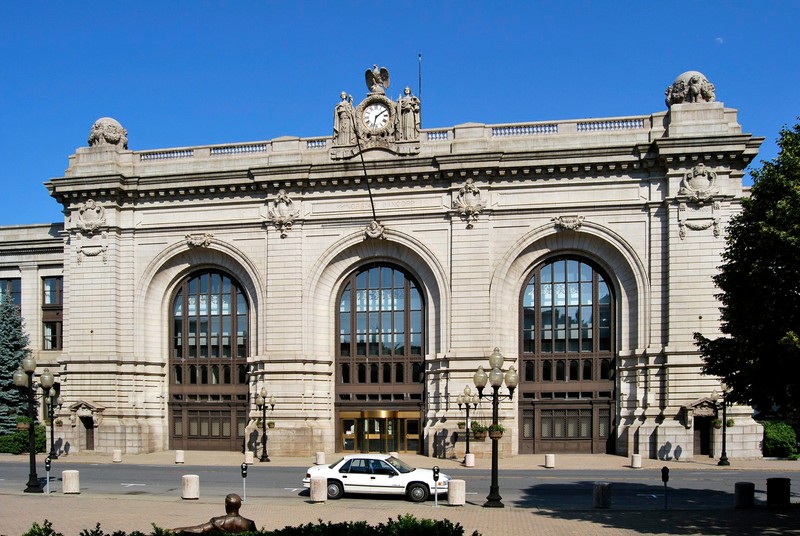Albany Union Station (Kiernan Plaza)
Introduction
Text-to-speech Audio
Images
1904 photo of Union Station in Albany

1930 Postcard of Union Station in Albany

2010 photo of Union Station in Albany

Backstory and Context
Text-to-speech Audio
Union Station played an integral part in Albany's story of its growth during the twentieth century. Upon completion, many considered the station to be one of the most modern in the country, serving as a source of pride for its operator: New York Central Railroad. As well, the building stood as a mark of civic pride. The building furthered the city's success as a transportation hub that dated back to when it became the state capital in 1797, first because of the waterways and then its railways. Since the late 1980s, the building has primarily served as the home to financial institutions.
The train station emerged as part of an effort to propel Albany into becoming one of the state's, if not nation's, most prominent cities. The city, which became the state capital in 1797, grew as a significant transportation center throughout the nineteenth century. Initially, speculators and businesses viewed the city's position on the Hudson River and as the original eastern terminus of the Erie Canal as favorable for investment, which set the stage for railways to arrive. The station served local trolleys and trains that connected Albany to much of the region and nation, serving nearly 100 trains per day in 1900 and more than 120 by World War II.
However, the station did more than function as a transportation hub; it stood as a sign of maturation and progress. The plan included a network of underground walkways that provided a comfortable, all-season connection between the waiting room and the trackside passenger loading platforms. The spacious waiting room consists of sophisticated, ornate detailing. Arguably, its most striking feature involves the six towering arched windows, three in the front and three in the back, which allowed light to flood the room.
Just as the Erie Canal success gave way to railway success, the focus on trains waned during the twentieth century as automobiles (and interstate highways) and air travel came to dominate. By the 1960s, the passenger rail business proved utterly unprofitable. The State of New York purchased Union Station in 1966, and in 1968 the last train left the station. For years, the building decayed. But in the mid-1980s, Union Station began a new life mainly as a financial center. Norstar Bancorp purchased Union Station and spent two years renovating it (and preserving its historical details) during the late 1980s. Several banks bought and sold the building throughout the twenty-first century. As of 2020, the building is home to a credit union, but it's also home to wedding halls and is part of a section of town the city hopes will cater to tech companies and researchers.
Sources
Albany Business Review Staff. "Former Union Station is truly `livable' historic building." Albany Business Review (Albany) October 18, 1999. News sec. https://www.bizjournals.com/albany/stories/1999/10/18/focus3.html.
Albany Business Review Staff. "SEFCU, CHA among new tenants at Kiernan Plaza." Albany Business Review (Albany) September 9, 2013. Banking and Financial Services sec. https://www.bizjournals.com/albany/blog/2013/09/sefcu-cha-among-new-tenants-at.html.
Douge, Michael and Susan Douge. "How Penn Central Ruined Everything, Railwise (or why we don’t have a railroad station in Albany)." Friends of Albany History (blog). January 23, 2018. https://friendsofalbanyhistory.wordpress.com/tag/union-station/
Liebs, Chester H. "Nomination Form: Albany Union Station." National Register of Historic Places. archives.gov. July, 1970. https://catalog.archives.gov/id/75316157.
Opalka, Anthony. "Albany: One of America’s First Cities." Albany Institute of History and Art. Accessed November 10, 2020. https://www.albanyinstitute.org/albany-one-of-americas-first-cities.html.
By Detroit Publishing Company - This image is available from the United States Library of Congress's Prints and Photographs divisionunder the digital ID det.4a12072.This tag does not indicate the copyright status of the attached work. A normal copyright tag is still required. See Commons:Licensing for more information., Public Domain, https://commons.wikimedia.org/w/index.php?curid=11376519
By Unknown author - Collection of the Albany Institute of History and Art, Public Domain, https://commons.wikimedia.org/w/index.php?curid=10629736
By UpstateNYer - Own work, CC BY-SA 3.0, https://commons.wikimedia.org/w/index.php?curid=10688788
